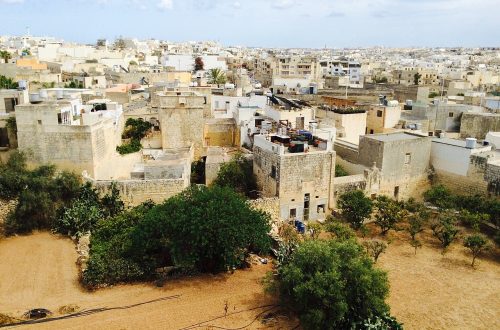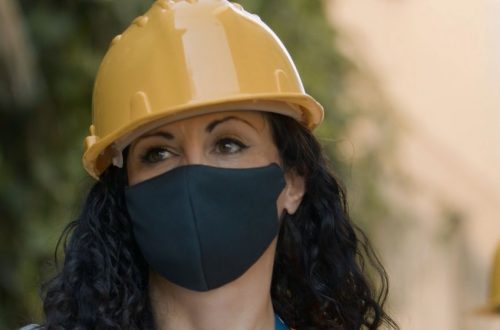
MUŻA: Masterpieces in Virtual Reality (Valletta, Malta)
An exhibition of 13 works from the late 15th to the mid-18th centuries was held both at the premises of the MUŻA, the Maltese National Museum of Fine Arts, and on their website through a Virtual Reality tour free of charge. The Digitisation Unit of Heritage Malta realised this production completely in-house in order to enhance accessibility to the exhibition during Covid times and in the effort to make baroque art meet the interest of the younger generations.
Background
MUŻA is the Maltese National-Community Art Museum, previously known as National Museum of Fine Arts (Mużew Nazzjonali tal-Arti, in Maltese), before changing its premises from Admiralty House to the Auberge d’Italie in Valletta, Malta. The new museum was inaugurated in 2018 for Valletta 2018 European Capital of Culture. The project was part-financed by the European Union under the European Regional and Development Fund, European Structural and Investment Funds 2014-2020.
The permanent collection is grouped into four main themes: The Mediterranean, Europe, Empire and The Artist and it juxtaposes old masters with contemporary artworks, group artworks and objects. Artists suchs as Mattia Preti, Victor Pasmore and Antonio Sciortino are featured in the gallery.
The building used to be the historic seat of the Italian knights of the Order of St John, being in itself an heritage site. Some features, such as the main staircase, have been rebuilt in contemporary material. The main courtyard has been kept as a public space, which included an information point and a thematic restaurant/cafeteria. The museum has been restored to be also a net zero building.
The management of the collection and of the museum’s premises falls in the remit of Heritage Malta, the national agency for cultural heritage and restoration.
Description
‘Masterpieces at MUŻA’ is an art exhibition inaugurated in June 2021. It displayed thirteen Old Masters paintings loaned from an international private collection in Geneva. Once the temporary exhibition concluded, these works would then be integrated into MUŻA’s display for five or ten years.
The paintings exhibited range from the late 15th to the mid-18th centuries, including works by artists such as Giovanni Baglione, François Boucher, and Claude-Joseph Vernet, made available to the Maltese public for the very first time ever or after decades.
Masterpieces at MUŻA was developed in five thematic sections, providing context for the choice of subjects represented in the paintings:
- Facing Portraits
- Madonna and Child
- Passion and Devotion
- Greek Myth in Art
- Destructive Nature
Beside the physical exhibition, a specifically designed VR experience enables the 13 masterpieces to be enjoyed free of charge. Although this exhibition was held more than one year after the first lockdown, the pandemic times were not over yet. Businesses, institutions and people were still facing a lot of uncertainty, including not knowing whether it was possible to open to the public or not and to how many people. Opting for a double-pronged approach, pairing the physical venue with an online virtual exhibition, fulfills the need of granting access to the masses and to the most fragile subjects within the society even during a global pandemic.
While being coherent with the curatorial aspects of the exhibition, the VR experience needed development of its own. The virtual tour is a product of a multidisciplinary approach, combining computer science with the humanities. The VR experience, in particular, aims to allure younger generations, introducing them to Renaissance art in an entertaining way.
Owners of a VR (virtual reality) headset can enjoy the tour in 3D, enhancing the detail and user experience for this exhibition. In fact the headsets provide bite-sized information about the artist and the work when you look at it.
The realisation of the VR exhibitions saw the employment of different tools and techniques:
- Mapping of the exhibition
- Gigapan
- 3D Vista
- creation of panoramic image
- creation of audio guides in English and Maltese (also available at the physical exhibition with QR Codes)
The exhibitions was supported by Visit Malta, the Ministry for the National Heritage, the Arts and Local Government, the Ministry for Finance and the Department of Art and Art History at the University of Malta
Impact
Impact on the organisation:
- No external stakeholders were involved in the development of this production, which was completely realised in-house by the DIgitisation Unit of Heritage Malta, by using the latest state-of-the-art technology in the industry. The efforts invested in this initiative, which was the first of its kind in Malta, can be further exploited for future initiatives.
Impact on the target groups
- Research suggests that museum visitors recall their experience and learn more when they use such technology compared to audio guides or traditional wall-mounted text panels.
- Enhanced accessibility. The VR experience has a double effect. It makes the exhibition available to persons that for any reason, linked to the pandemic or not, cannot attend in person. Also, it stands as a virtual future memory, as it will not be taken down once the physical exhibition is over.
- The initiative was promoted by Heritage Malta beyond the scope of the exhibition itself, shifting the focus on the technological side of the project, which promises to deliver more opportunity in the future and at the same time tries to allure the younger generations.
Interpretation
Trying to recreate the museum experience using virtual reality is not an innovative concept, even more so during the pandemic. Although, the fact that the whole experience was curated in-house and not creating one of the many Google 360 tours, as well as the focus on enhancing accessibility and the attractiveness of the museum for young people, are all worthy of mention.
References
- https://muza.mt/making-of-masterpieces-at-muza/
- https://heritageinmotion.eu/himentry/slug-4dbc597c39b03532d1861263f8696c87
- https://tony-cassar.medium.com/art-in-vr-239983bb98bd
- https://www.youtube.com/watch?v=SLi_iLZtZuc
- https://uk.icom.museum/interview-with-wilbert-tabone-muza-malta/
- https://heritagemalta.org/events/exhibition-masterpieces-at-muza/
- https://heritagemalta.org/thirteen-old-master-paintings-grace-muza-for-years-to-come/”
- https://heritagemalta.org/masterpieces-at-muza-may-now-be-experienced-through-virtual-reality/
- https://www.pressreader.com/malta/the-malta-independent-on-sunday/20210711/282029035229035
- https://gadgetsmalta.com/general/boost-the-historic-experience-through-virtual-realities-at-muza/
- https://timesofmalta.com/articles/view/masterpieces-at-muza-thus-far.902639
- https://timesofmalta.com/articles/view/thirteen-masterpieces-to-grace-muza-for-years-to-come.878612
- https://timesofmalta.com/articles/view/masterpieces-back-in-the-limelight-at-muza.881905
- https://www.researchgate.net/publication/334671983_Technology_for_Cultural_Heritage
Author
Header photograph
Photo by James Yarema on Unsplash




